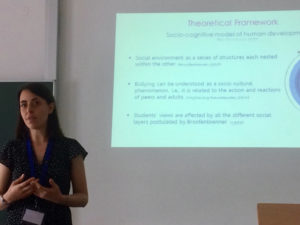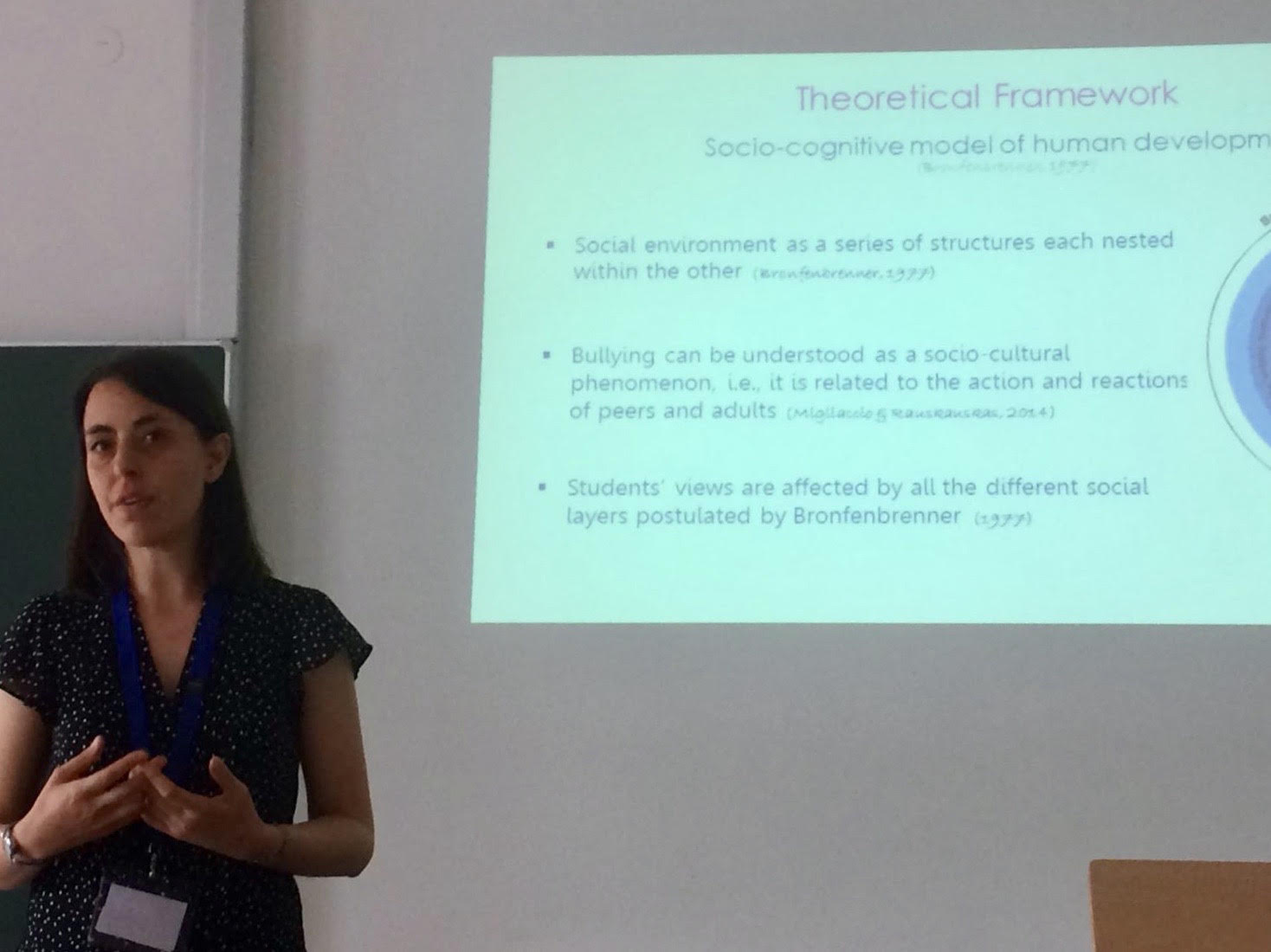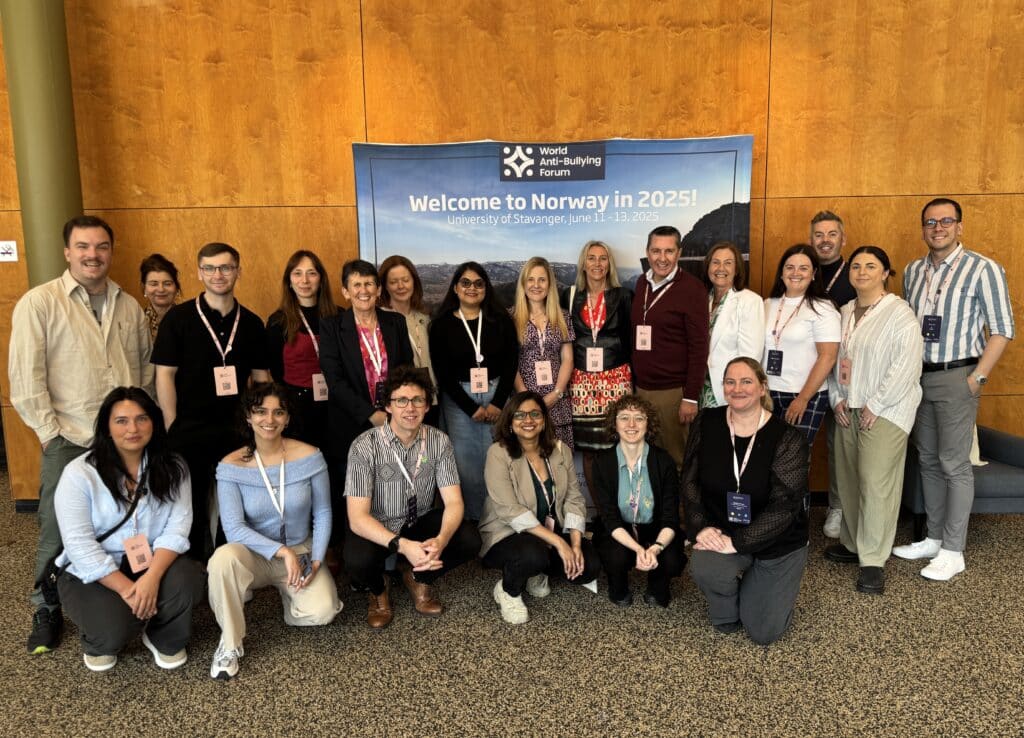ABC Research Fellow, Dr. Angela Mazzone presented recent research on ‘Changing norms and promoting multicultural involvement: Links to prejudice, bullying and achievement’ at the Cultural Diversity, Migration and Education Conference 2018, in Potsdam, Germany.
The project was a qualitative research project, that aimed at investigating bullying towards newcomer same-country and immigrant peers. Participants’ perspectives were analyzed through a grounded theory approach. The findings showed that the victim of bullying either from same-country or abroad was depicted as a “deviant”.The peer ecology (e.g., standards of normativity within the peer group) interacts with other socializing agents (e.g., family; mass media) in producing adolescents’ beliefs and social behaviors. Hence, the victim’s deviance is a social product of the interaction between distinct socio-contextual layers. – Dr. Mazzonne.

Why are same-country and immigrant peers bullied? Investigating adolescents’ perspectives through a grounded theory approach.
Theoretical/conceptual framework: Bullying is a systematic and repeated behavior aimed at harming a less powerful victim (Smith, 2016). In recent years, researchers have shown that bullying could be understood as a socio-cultural phenomenon, in which the intertwinement between several factors related to gender, appearance, race, as well as to the peer ecology and the wider social context affect its prevalence (Espelage & Swearer, 2010; Migliaccio & Raskauskas, 2014). In particular, bullying was described as a form of collective violence towards children who do not conform to the peer group normativity (Yoneyama & Naito, 2003). Being a foreigner is one of the features that contributes to make the victim deviant and therefore worthy of being bullied (Thornberg, 2018). Indeed, immigrant children are more likely to being called names and excluded due to their cultural background (Strohmeier, Kärnä & Salmivalli, 2011).
Aims and objectives: The present study investigated adolescents’ perspective about bullying towards same-country and immigrant peers in a sample of Italian and immigrant students. In the past decades, the immigrant student population in Italy has been growing and becoming increasingly diverse (Azzolini, 2011). Therefore, it seems urgent to investigate the phenomenon of bullying towards immigrant peers.
Sample & Methodology: Thirty-five Italian and immigrant early adolescents and adolescents (age range: 11-15) took part to the study. Participants were probed with two bullying scenarios, one depicting a new classmate coming from another Italian city and one depicting a new classmate coming from a foreign country. The scenarios were presented in a random order. Participants’ perspectives about the motives for bullying were examined through a constructivist Grounded Theory approach (Charmaz, 2014).
Results: The core concept of socializing deviance was developed by coding and analyzing the motives that participants mentioned for bullying a newcomer peer either from another Italian city or from abroad. The social process of socializing deviance refers to a series of shared beliefs within the peer group about the victim’s deviant features. Data showed that the peer ecology (e.g., standards of normativity within the peer group) interacts with other socializing agents (e.g., family; mass media) in producing adolescents’ beliefs and social behaviors. Hence, victim’s deviance is a social product of the interaction between distinct socio-contextual layers. Three sub-categories related to both forms of bullying emerged from the core concept: (a) Rejecting the newcomer deviance, (b) Rejecting physical deviance and (c) Rejecting personality deviance. These sub-categories were related to the sub-categories of bullying towards immigrant peers: (d) Rejecting cultural deviance and (e) Learned racism.
Implications: Findings of this study stress the importance of educating children to tolerance and respect towards “deviance”. Prevention programs should address students along with socializing agents, such as parents and other adults in order to overcome stereotypes and prejudices.



